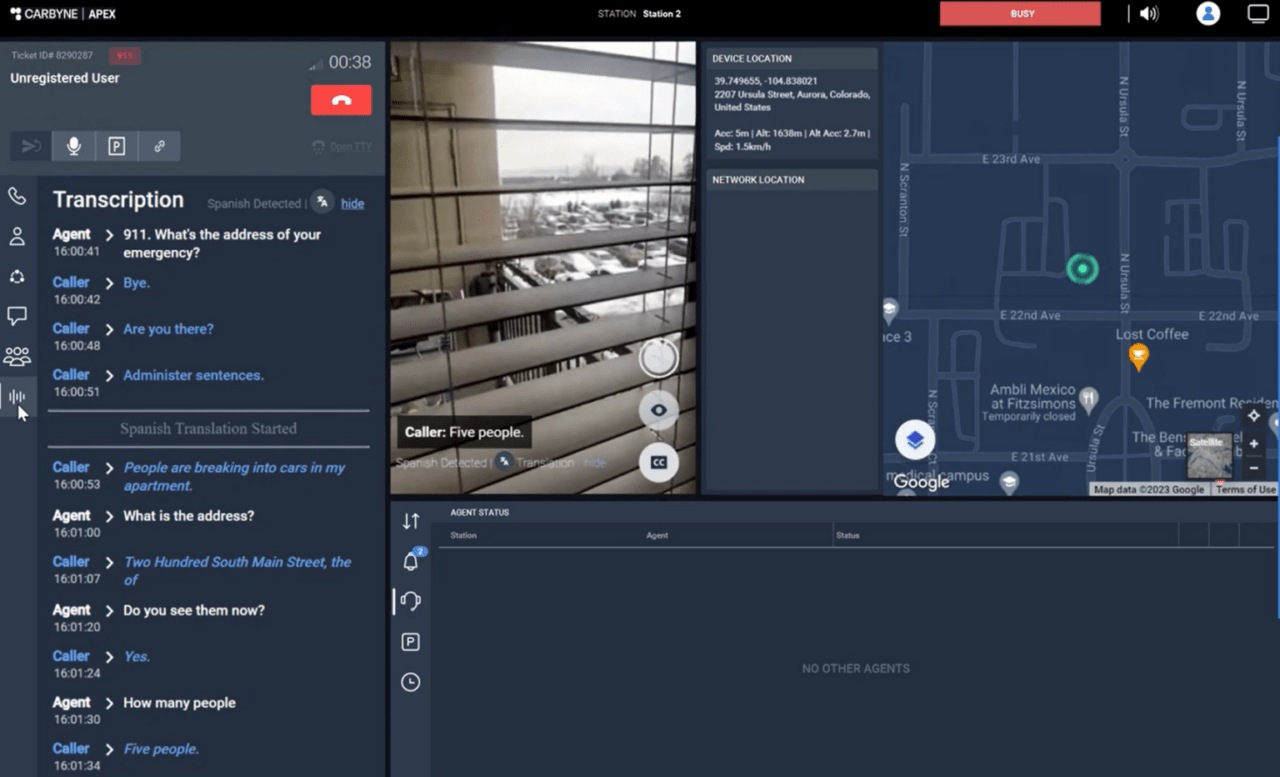
Shaving minutes off 9-1-1 calls can save thousands of lives each year, and reducing language barriers is a crucial step”
In emergency situations, every second counts. The ability to communicate quickly and effectively can be the difference between life and death. According to the U.S. Census Bureau, 67 million people in America speak a language other than English at home, and that number is only expected to grow. Unfortunately, most non-English speaking 9-1-1 callers often must wait 5-10 minutes to get help in their native language. The need for immediate language identification and translation during emergency calls has become more critical than ever.
US regulators estimate that even a one-minute reduction in response time during a 9-1-1 call can save up to 10,000 lives a year. Therefore, finding ways to minimize the friction between emergency and response caused by language barriers is crucial to saving those precious minutes– and thus lives. One solution to this problem is integrating live audio language translation into emergency call-taking platforms.
Traditionally, when a 9-1-1 call is placed, and the caller struggles to communicate in English, the call-taker must first identify the language and then connect a human translator through a standby service. While this method serves its purpose, it is time-consuming and can delay the dispatch of emergency services– and callers often drop off while waiting for a connection. As technology advances, AI-powered language translation tools are becoming increasingly sophisticated and accurate, offering the potential to revolutionize how emergency calls are handled.
By instantly identifying the caller’s language and providing real-time translations, AI-enabled live audio translation in Carbyne’s APEX call handling solution can shave off valuable minutes during an emergency call. Not only does this technology assist in reducing response times, but it also supports diverse communities and ensures that no one feels disadvantaged due to language barriers during some of the most challenging moments of their lives.
As an early adopter of Carbyne’s live language translation feature, Monica Sanchez of Presidio County Sheriff’s Office in Marfa, TX states, “I speak Spanish, but often my Spanish is different than what many callers use. So I use Carbyne’s translation to help verify addresses. The caller might tell me a location, and I use the Carbyne translation feature to make sure I understood it correctly when I verify against the geolocation. I also use Carbyne’s translation to ensure that I understand the right words people use to describe their feelings. For example, I had a caller tell me in Spanish that he was sick. He used a different word for ‘stomach’ than the word I knew, but translation helped me understand what was going on so I could send help quickly. Nothing we have used for translation has been as great as Carbyne.”
While AI-powered language translation is not perfect, it is continuously improving, and the ability to understand various dialects and accents is becoming more refined. As more languages are added to these platforms, and the technology becomes even more accurate, the positive impact on emergency response times will continue to grow.
Moreover, these AI-driven platforms can provide additional benefits, such as transcribing and recording translated calls for post-call analysis, further aiding in understanding and improving emergency response protocols. This data-driven approach can lead to more efficient and transparent operations, ultimately saving more lives.
It’s essential to recognize that AI-powered language translation will not replace human translators in emergency call centers completely. There will always be situations where a human translator’s expertise and understanding of cultural nuances are necessary. However, integrating AI technology can be a valuable tool in expediting emergency response when every second is crucial.
The need for immediate language identification and translation in emergency calls is undeniable. As we strive to create a more inclusive society, we must ensure that language barriers do not impede access to life-saving emergency services. By embracing AI-powered language translation, we can help break down these barriers and save precious time, ultimately saving lives.